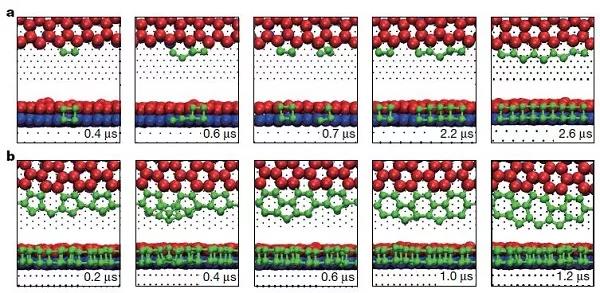Peking University‘s latest Nature 2020: atomic-level imaging reveals the growth of two-dimensional ice layers and their edge structures
QQ Academic Group: 1092348845
Detailed
[Introduction]
The formation and growth of surface water-ice layers is a very common phenomenon in life, including the existence of two-dimensional ice layers on the surfaces of metals, insulating materials and even graphene. Although in previous research, people have performed imaging analysis of such surface phenomena, the capture of the superstructure or intermediate product structure during the ice growth process has not been realized so far, which has hindered people from such growth. In-depth study of the mechanism.
[Achievement Profile]
Jiang Ying, Wang Enge, Xu Limei from Peking University, and Zeng Xiaocheng (co-corresponding author) of the University of Nebraska-Lincoln, USA, and others reported that the non-contact atomic force microscopy was used to grow the two-dimensional The edge structure of the double-layer ice enables imaging observation. The study found that during the growth of two-dimensional hexagonal ice, not only Z-shaped edge structures (commonly found in two-dimensional hexagonal crystals), but also armchair-type edge structures coexisted with it. Freezing observation and further simulation experiments also revealed the two-dimensional ice growth mechanism, in which the Z-shaped edge structure participates in the process involving the evolution of water molecules to the edge structure (collective bridging mechanism), while the intermediate products of the armchair structure participate The process of local seed generation and edge reconstruction is introduced. These phenomena and mechanism studies provide a new perspective for studying the growth mechanism of two-dimensional materials. On January 01, 2020, the relevant results were published online in Nature with an article entitled "Atomic imaging of the edge structure and growth of a two-dimensional hexagonal ice".
[Picture and text guide]
Figure 1 Experimental observation of two-dimensional ice layer and its STM and AFM images

Figure 2 AFM characterization details of the two-dimensional ice layer and its structural model

Figure 3 Growth process of Z-shaped and armchair-shaped edge structures

Figure 4 Molecular dynamics simulation of growth of Z-shaped and armchair-shaped edge structures

Literature link: Atomic imaging of the edge structure and growth of a two-dimensional hexagonal ice (Nature, 2020, DOI: 10.1038 / s41586-019-1853-4)
This article was contributed by NanoCJ.
Source-WeChat public: material source
- Previous: Angew: MXene liquid-ph
- Next: 1


 About us
About us